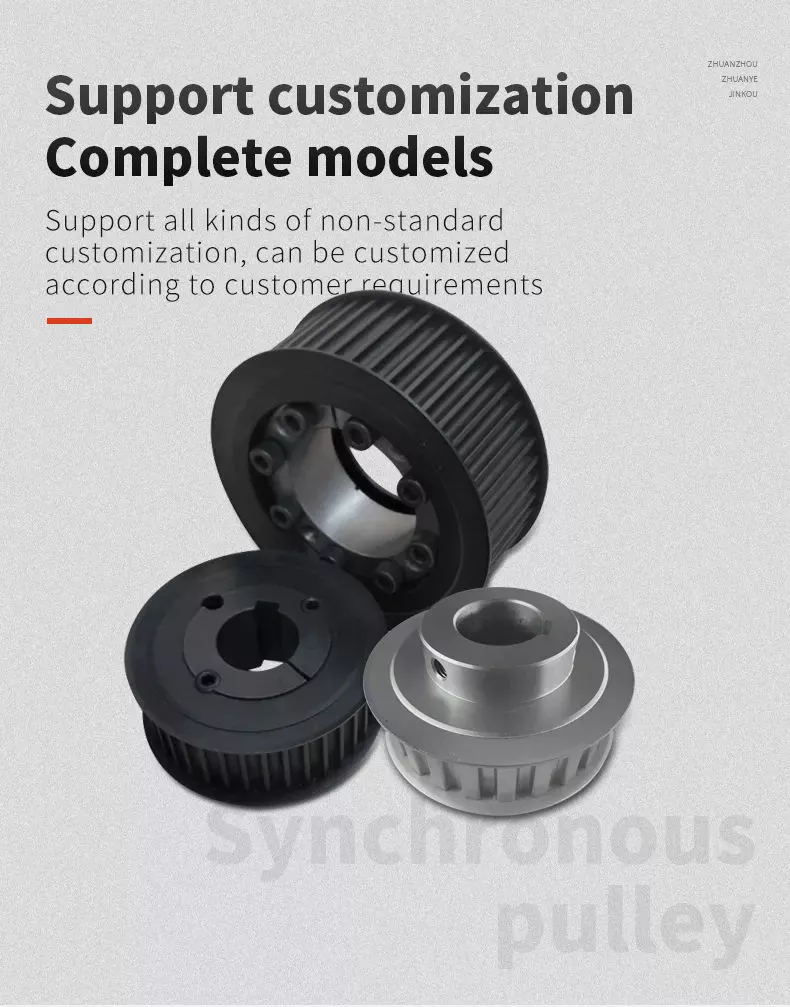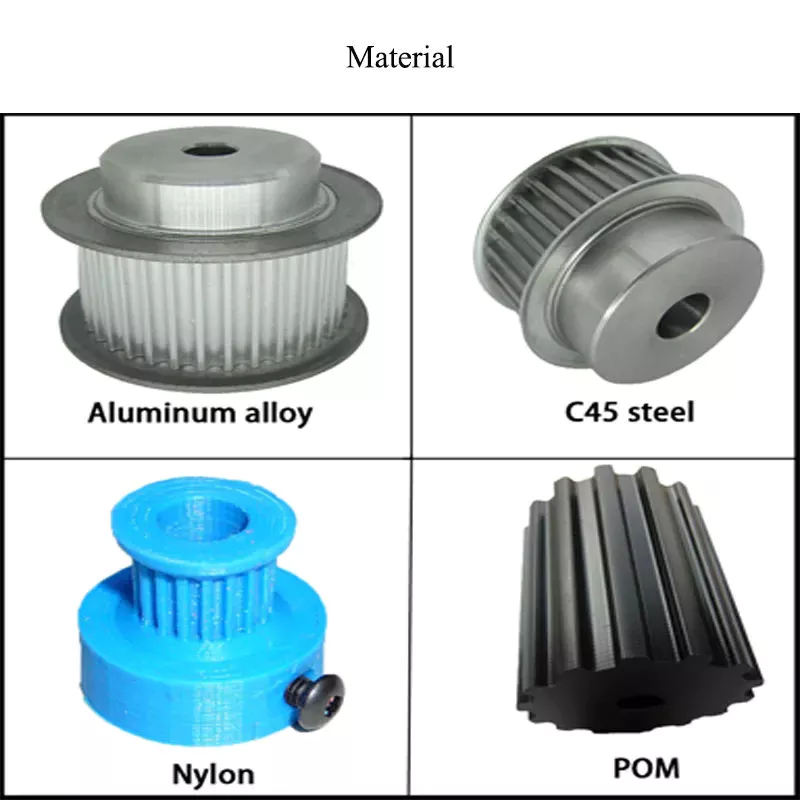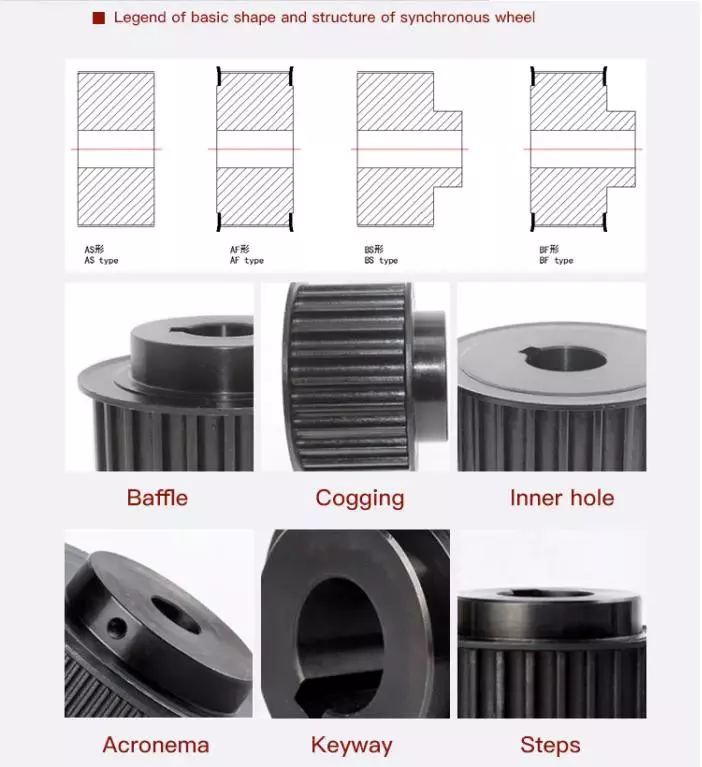Product Description
Product Description
Low Price Aftersale Market Auto Parts Car Repair Accessories Belt Tensioner Pulley for Opel Astra for CZPT Nubira for Chevrolet Alero OEM 1340541 9 0571 430
Water Pump for BUICK
Water Pump for CADILLAC
Water Pump for CHEVROLET
Water Pump for DAEWOO
Water Pump for LADA
Water Pump for LOTUS
Water Pump for OPEL
All kinds of car tensioner pulleys can be produced for you. Welcome to your inquiry.
| MIC NO. | REF&OEM NO | APPLICATION | YEAR | PHOTO |
| TB34OP8801 | 201129CP CHEVROLET : 96184932 CHEVROLET : 96298799 CHEVROLET : 96435138 CHEVROLET : 96459042 DAEWOO : 96184932 DAEWOO : 96298799 DAEWOO : 96435138 DAEWOO : 96459042 OPEL : 134571 OPEL : 1340541 OPEL : 1340542 OPEL : 1340544 OPEL : 24412292 OPEL : 634571 OPEL : 9 0571 430 OPEL : 90448220 OPEL : 90505719 OPEL : 9 0571 129 SUZUKI : 9516085Z00 |
BUICK SKYLARK 2.4 CADILLAC BLS 2.0 T Flexpower CADILLAC BLS Wagon 2.0 T Flexpower CHEVROLET ALERO 2.4 16V CHEVROLET CAPTIVA (C100, C140) 2.4 CHEVROLET EPICA (KL1_) 2.0 CHEVROLET EVHangZhou 2.0 CHEVROLET LACETTI (J200) 1.8 CHEVROLET NUBIRA Estate 1.8 CHEVROLET NUBIRA Saloon 1.8 CHEVROLET REZZO MPV (U100) 2.0 CHEVROLET ZAFIRA (F75) 2.0 DAEWOO EVHangZhou (KLAL) 2.0 DAEWOO LEGANZA (KLAV) 2.0 16V DAEWOO NUBIRA (J100) 2.0 16V DAEWOO NUBIRA Saloon (J100) 2.0 16V DAEWOO NUBIRA Saloon (J200) 1.8 DAEWOO NUBIRA Wagon (J100) 1.6 16V DAEWOO NUBIRA Wagon (J200) 1.8 DAEWOO REZZO (U100) 2.0 LADA 110 (2110) 2.0 i (21106) LOTUS EUROPA S 2.0 Turbo OPEL ANTARA (L07) 2.4 OPEL ASTRA F (T92) 1.4 (F19, M19) OPEL ASTRA F (T92) 1.6 (F19, M19) OPEL ASTRA F (T92) 1.8 i (F19, M19) OPEL ASTRA F (T92) 2.0 i (F19, M19) OPEL ASTRA F (T92) 2.0 i 16V (F19, M19) OPEL ASTRA F CLASSIC Estate (T92) 1.6 i 16V (F35, M35) OPEL ASTRA F CLASSIC Hatchback (T92) 1.6 i 16V (F08, M08, F68, M68) OPEL ASTRA F CLASSIC Saloon (T92) 1.6 i 16V (F19, M19) OPEL ASTRA F Convertible (T92) 1.4 i 16V OPEL ASTRA F Convertible (T92) 1.6 i OPEL ASTRA F Convertible (T92) 1.8 i 16V OPEL ASTRA F Convertible (T92) 2.0 i OPEL ASTRA F Estate (T92) 1.4 (F35, M35) OPEL ASTRA F Estate (T92) 1.6 (F35, M35) OPEL ASTRA F Estate (T92) 1.8 i (F35, M35) OPEL ASTRA F Estate (T92) 2.0 i (F35, M35) OPEL ASTRA F Hatchback (T92) 1.4 (F08, M08, F68, M68) OPEL ASTRA F Hatchback (T92) 1.6 (F08, M08, F68, M68) OPEL ASTRA F Hatchback (T92) 1.8 i (F08, M08, F68, M68) OPEL ASTRA F Hatchback (T92) 2.0 GSI 16V (F08, M08, F68, M68) OPEL ASTRA F Van (T92) 1.6 i (F70) OPEL ASTRA G Convertible (T98) 2.0 16V Turbo (F67) OPEL ASTRA G Estate (T98) 2.0 16V (F35) OPEL ASTRA G Hatchback (T98) 2.0 16V (F08, F48) OPEL ASTRA G Saloon (T98) 2.0 16V (F69) OPEL ASTRA H (A04) 2.0 Turbo (L48) OPEL ASTRA H Estate (A04) 2.0 Turbo (L35) OPEL ASTRA H GTC (A04) 2.0 Turbo (L08) OPEL ASTRA H TwinTop (A04) 2.0 Turbo (L67) OPEL CALIBRA A (C89) 2.0 i (M07) OPEL COMBO (71_) 1.4 OPEL CORSA B (S93) 1.4 i (F08, F68, M68) OPEL CORSA B (S93) 1.6 GSI 16V (F08, F68, M68) OPEL CORSA B Box (S93) 1.4 i (F08, W5L) OPEL FRONTERA A (U92) 2.2 i (54MWL4) OPEL FRONTERA A Sport (U92) 2.0 i (52SUD2, 55SUD2) OPEL FRONTERA B (U99) 2.2 i (6B_ZC, 6B_VF, 6B_66, 6B_76) OPEL OMEGA B (V94) 2.0 (F69, M69, P69) OPEL OMEGA B (V94) 2.2 16V (F69, M69, P69) OPEL OMEGA B Estate (V94) 2.0 (F35, M35, P35) OPEL OMEGA B Estate (V94) 2.2 16V (F35, M35, P35) OPEL SINTRA (APV) 2.2 i 16V (OUN16, Y94) OPEL SPEEDSTER (E01) 2.0 Turbo (R97) OPEL TIGRA (S93) 1.4 16V (F07) OPEL TIGRA (S93) 1.6 16V (F07) OPEL VECTRA A (J89) 1.6 i (F19, M19) OPEL VECTRA A (J89) 1.8 i Cat (F19, M19) OPEL VECTRA A (J89) 2.0 i (F19, M19) OPEL VECTRA A Hatchback (J89) 1.6 i (F68, M68) OPEL VECTRA A Hatchback (J89) 1.8 i (F68, M68) OPEL VECTRA A Hatchback (J89) 2.0 i (F68, M68) OPEL VECTRA B (J96) 1.6 i (F19) OPEL VECTRA B (J96) 1.8 i 16V (F19) OPEL VECTRA B (J96) 2.0 i (F19) OPEL VECTRA B Estate (J96) 1.6 i (F35) OPEL VECTRA B Estate (J96) 1.8 i 16V (F35) OPEL VECTRA B Estate (J96) 2.0 i 16V (F35) OPEL VECTRA B Hatchback (J96) 1.6 i (F68) OPEL VECTRA B Hatchback (J96) 1.8 i 16V (F68) OPEL VECTRA B Hatchback (J96) 2.0 i 16V (F68) OPEL ZAFIRA / ZAFIRA FAMILY B (A05) 2.0 (M75) OPEL ZAFIRA A MPV (T98) 2.0 OPC (F75) |
1995-1999 2007- 2007- 1999-2004 2006- 2005-2006 2005- 2005- 2005-2009 2005-2009 2005- 2001-2012 2002- 2000-2004 1997- 1997- 2003- 2000- 2003- 2001-2004 1996-2000 2006- 2006-2011 1992-1998 1995-1998 1992-1998 1992-1998 1995-1998 1998-2005 1998-2002 1998-2002 1996-2001 1993-1996 1994-2001 1993-1994 1992-1998 1995-1998 1991-1998 1991-1994 1992-1998 1995-1998 1991-1998 1991-1998 1991-1998 2002-2005 1998-2004 1998-2005 1998-2005 2004-2571 2004-2571 2005-2571 2005-2571 1989-1996 1994-2001 1993-2000 1993-2000 1999-2000 1995-1998 1992-1998 1998-2004 1994-2000 1999-2003 1994-1999 1999-2003 1996-1999 2002-2006 1994-2000 1994-1998 1993-1995 1990-1995 1988-1992 1993-1995 1988-1990 1988-1990 1995-2002 2000-2002 1995-2002 1996-2000 1996-2000 1996-2000 1995-2003 1995-2000 1995-2000 2006-2571 2001-2005 |
Company Profile
Our Factory
Exhibition Shows
FAQ
Q1: Are you a trading company or manufacturer?
A1: We are industrial and export combination.
Q2: If there’s any quality problem, what would you do to guarantee our rights?
A2: We have seldom received complaints from our customers so far, because we only do auto parts with good quality.
If there is any quality problem, we’ll be actively responsible for that.
Q3: How long is your delivery time?
A3: Around 30-45 days if no stock. Around 7 days when stock available.
Q4: What’s your sample policy?
A4: Samples under $50.0 will be no charge, however the freight charge should be borne on buyer’s account.
Normal delivery time will be 4 days when stock available.
| After-sales Service: | Online Technical Support |
|---|---|
| Warranty: | One year or 50, 000kms |
| Car Make: | FOR OPEL |
| Car Model: | FOR ASTRA F Convertible |
| Lead time: | 60-90 days |
| OEM service: | Available |
| Samples: |
US$ 15/Piece
1 Piece(Min.Order) | |
|---|
| Customization: |
Available
| Customized Request |
|---|
Pulley Type
There are several types of pulleys. These include fixed pulleys, load multipliers and movable pulleys. Below is a description of each pulley type. A load multiplier is a special type of pulley with multiple wheels for increased lifting capacity. It is used in a wide range of applications including power transmission and construction. Some common uses of pulleys are listed below.
moving pulley
Movable pulleys work by transferring the weight of a load to another object of the same mass. Since a live pulley is inherently frictionless and weightless, the force required to lift a load with it is the same as the weight of the load. This principle applies to tall buildings and residences. It is an excellent choice for lifting heavy objects such as furniture and washing machines.
A pulley is a mechanical device with a wheel that rotates on a shaft. The axle is attached to the wheel and is usually fixed. The movable pulley can be fixed or movable, both of which can change the direction of the force on the rope. Some pulleys can also change the magnitude and direction of the force. They are ideal for a variety of applications, from lifting heavy objects to transporting objects.
Another type of movable pulley works by transmitting force to another object. It has a free axis and the total force provided by the rope tension is balanced. Since the tension on the rope is constant in each segment, pulling one end of the rope will double the force on the shaft, resulting in two mechanical advantages. This mechanical advantage is the main reason why movable pulleys are so versatile.
Another form of moving pulley is called a KWL diagram. The KWL diagram summarizes the basic concepts of the drive wheel. KWL diagrams are an excellent way to assess a student’s understanding of the concepts discussed in the course. Word questions are a great way to check whether students understand concepts. When students answer the word questions correctly, the answer is yes!
Fixed wheel pulley
If you need to move heavy objects, a single fixed wheel pulley is not a good choice. Using a single fixed pulley might be similar to using a handbag, but it’s not very convenient. This type of pulley system relies on friction to transmit motion. As a result, it can slip and isn’t always reliable. Fortunately, you can find other options that work just as well.
Fixed pulleys are the most basic type of pulley. They consist of grooved wheels and ropes attached to objects. These pulleys make lifting easier. Because the rope or cable only moves in one direction, the movement of the object feels lighter. And they are also easy to install. However, before you buy a fixed wheel pulley, make sure it is strong enough to support the weight of the load.
The disadvantages of fixed pulleys are obvious. One of them is the lack of mechanical advantage. A fixed pulley pulls up with the same force as a single moving pulley, and a single fixed pulley is not particularly effective as a force multiplier. However, the effect is more pronounced when you combine multiple fixed-wheel pulleys. You will get double the power! So what do fixed wheel pulleys have to offer?
Fixed wheel pulleys can be as small as a ring. A single ring pulley requires twice as much force as the weight being pulled. Adding more loops to the rope will reduce the effort required to pull the weight. The mechanical advantage of a fixed pulley is proportional to the number of strands running to the free pulley. A 100-pound pull on the free end will lift a 300-pound load.
composite pulley
Compound pulleys are pulleys that can be used to change the direction of a control wire. It can also be used to modify the mechanical force of the wire by moving the item it is connected to. In galleons, compound pulleys are more common. They are often combined with other ropes for mechanical advantage. Here are some common uses for composite pulleys.
The ideal mechanical advantage of a pulley is equal to the number of rope segments that pull up the load. This means that the more rope segments, the less force is required. A compound pulley will have the ideal mechanical advantage of 2, which means it will generate more force than a simple pulley. Composite pulleys are also more efficient at transmitting force because their number of rope segments is usually equal to the unit weight.
Composite pulley systems use more than two pulleys and ropes. More pulleys will reduce the force required to move heavier objects. They are usually used in large sailboats. The system is also used on construction sites. It can be used for a variety of applications, including lifting large objects or transmitting electricity. You can imagine how it would change your life if you had to move a large sailboat, but the result would be the same: a composite pulley system would make it easier to lift a large sailboat.
Composite pulleys are also known as fixed pulleys. The fixed pulley is stationary, and the movable pulley moves back and forth. The latter is more effective when used with a detachable cord or strap. On the other hand, a moving pulley is a moving pulley and it gives you a mechanical advantage. You can imagine this pulley on a flagpole.
load multiplier
The multiplication system has three basic parts: the rope grab, the connector, and the pulley. While some basic multipliers may combine the three parts, the concept remains the same. The multiplication system can make pulling the rope easier by reducing the amount of friction that occurs. Below are some examples of multiplication systems. A compact rope grab is a great option for resetting the multiplier.
The load reduction that a pulley system can achieve is proportional to the number of ropes used to support it. Although most utility pulley systems use only four ropes, the theoretical maximum load reduction is a quarter of the actual load. In other words, the four-wheel system only reduces the weight of a 1,000-pound load by a quarter. That would require 167 pounds of force, a far cry from the 500-pound load a single pulley system can achieve.
The mechanical advantage of a pulley system can be calculated by calculating the ratio between the forces exerted on each wire. For example, a 90-kilogram load is supported by three ropes, each weighing about thirty-five pounds. The ropes on pulleys A and B each carry a load of 60 kg. Using this formula, a single pulley system will yield a mechanical advantage over two tractors.
To calculate the force required to pull the rope over the pulley, measure the angle and deflection between the ropes. The deflection angle when added to the included angle should equal 180 degrees. A 75 degree angle requires 159% of the load force. This means a total load multiplier of four. This formula is an important tool for calculating the force multiple of the pulley.
Disadvantages of fixed pulleys
There are two basic types of pulleys: movable and fixed. Active pulleys are more advanced, allowing the pulley to move according to the load. They reduce the force required to lift the load. Active roller pulleys are more compact and therefore take up less space. Both types are good for lifting heavier objects, but they each have their pros and cons.
Fixed wheel pulleys can be used to lift heavy objects. This type of pulley consists of a wheel with a fixed shaft that has grooves on its edges for guiding ropes or cables. This is a simple machine as no motor or engine is required to lift objects. When two or more wheels are used together, the ropes around the wheels form a powerful hoist.
Single wheel pulleys are not suitable for lifting. They tend to push things down. Also, they are unreliable because they rely on friction and can slip. Also, a single wheel pulley would require a lot of space. Another disadvantage of fixed-wheel pulleys is that they make it difficult to move heavy objects easily. Single fixed-wheel pulleys also tend to slip easily, making them a poor choice for many applications.
Fixed wheel pulleys are also easier to install and maintain than manually operated ones. It requires less space and lubrication than manual pulleys. Manual pulleys can cause injury because the operator will be lifting the full weight of the heavy object. Additionally, rope slippage can lead to muscle strains and rope burns. And the system requires frequent maintenance.
editor by CX
2023-04-25




